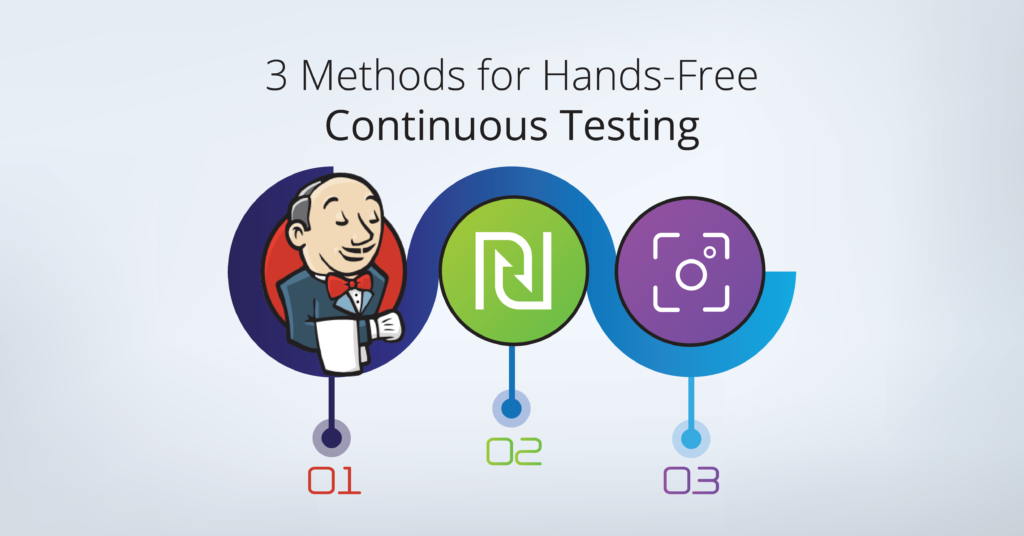
This article was originally published on CrossBrowserTesting. Thank you for supporting the partners who make SitePoint possible.

In order to strike the perfect balance between speed and quality, teams that hope to achieve Continuous Integration and Continuous Delivery must also implement Continuous Testing.
This is often easier said than done. It’s virtually impossible to have your team running tests at every moment — they do have lives outside of work after all, and it can be difficult to put dinner on the table while running a Selenium script at the same time. So how do you run your scripts, even if you aren’t at your desk?
Fortunately, there are various hands-free options for continuous testing that you can implement, which will keep tests running for you while you eat, sleep, or maybe even get some exploratory testing done.
Why Continuous Testing
What’s the point of continuous testing? There are a few major advantages that will enable you to achieve more in your day-to-day.
- Test while you sleep – With continuous testing, you can literally test in your sleep. By setting tests to run overnight, you can experience the luxury of coming in the next morning to have your test results waiting for you and knowing with a glance whether they passed. Just ask America’s Test Kitchen about how convenient it is.
- Keep up with Agile, DevOps and CI/CD – When software development teams are constantly integrating, you need a testing strategy to ensure those new features, fixes, and changes are put through the quality process, no matter how frequently they’re implemented. Continuous Testing is the only way QA teams can keep up with constantly changing features, frequent integrations, and fast workflows.
- Catch bugs in each regression – When there are constantly small changes to an application’s code, it can break something that was previously functioning. And you don’t want your customers to be the one to catch it. Continuous Testing will help you be first to spot new bugs, so you can quickly debug and release to users with confidence.
- Level up your automation game – Automate your automation with continuous testing, and set your tests to run as often as you need. Then come back to test results or screenshots that tell you exactly what you need to know about the health of your applications. Plus, testing in parallel allows you to further accelerate Continous Testing to increase browser coverage without compromising runtime.
Continuous Testing With a CI Server
Selenium WebDriver has long provided teams with the ability to automate tests across browsers. But in order to run those tests continuously, a Continuous Integration tool such as Jenkins, VS Team Services, Buildbot, Bamboo, CircleCI, TravisCI, Codeship, or TeamCity is needed.
By far, the most popular option is Jenkins, an open source automation server written in Java. In fact, according to the SmartBear 2018 State of Testing Survey, 66 percent of participants choose Jenkins to be their CI server. For development teams adopting Agile and DevOps workflows, Jenkins is a reliable tool for continuous integration and delivery.
But what about testing teams that want to leverage Jenkins for Continuous Testing with Selenium? The CrossBrowserTesting integration with Jenkins lets you run automated functional tests with Selenium, Appium, and visual screenshot tests, which means that every time you run your build process, you can simultaneously run your testing suite across thousands of browsers.
This is ideal for teams that already work with Selenium and a CI tool for deployment to start testing on a continuous basis. While Jenkins tends to be the most popular choice for CI and automated test scheduling, CrossBrowserTesting also integrates with TeamCity and VS Team Services, so no matter what tools you’re already using, it’s easy to integrate CrossBrowserTesting into your current workflow.
Continuous Testing With a Record and Playback Tool
For teams that may be less familiar with Selenium but still wish to automate, a record and playback tool might be a more practical option.
Record & Replay enables teams to achieve automation across browsers, just like they would with Selenium, without requiring knowledge of scripting and frameworks. This has provided teams with a more accessible option for less technical team members, or those who are just getting started with automation, to create automated tests. As tools like Selenium IDE and its alternatives are brought back into the spotlight, these options are becoming more and more attractive to modern testing teams.
The post 3 Methods for Hands-free Continuous Testing appeared first on SitePoint.
No comments:
Post a Comment